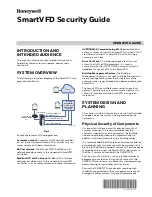
Description varix 200/varix 14 (DECT)
2 - 35
2 Planning a cordless communications network
To measure the propagation times, short-circuit plugs are connected to the cable outlets in
place of the FPs. An impulse is then transmitted from the PABX location and the time taken
until the reflected impulse returns to the PABX is measured. The respective value is then
recorded in the PABX memory. After all cables have been measured, the shorting plugs are
removed and the FPs are connected.
2.9.7
DECT standard technical data
Specification
DECT standard
Frequency range1
1880-1900 MHz
No. of carrier frequencies
10 FDMA (Frequency Division Multiple Access)
carriers
Channel structure
24 TDMA (Time Division Multiple Access) slots
Duplex mode
TDD (Time Division Duplex) 12 time slots each
Number of duplex channels
120
Modulation mode
GMSK with a modulation index of 0.5
Frequency swing
288 kHz nominal
Transmitter power PP / FP
10 mW / max. 250 mW
Overall data trans. rate
1152 kbit/s
Bit period
0.868
µ
s
Carrier frequency offset
1.728 MHz
TDMA frame period (24 slots)
10 ms
Time slot length
417µs, 52µs of this buffer period
Data per slot (voice transmission)
64 control bits, 320 user data bits, 4 bits for error
detection
Data trans. rate per channel
32 kbit/s uncoded, 25.6 kbit/s coded
Channel assignment
dynamic
Voice coding
ADPCM (G.726) at 32 kBit/s
Eavesdropping-protection
digital encryption
Traffic density
10000 Erlang per km
2
and floor level, typically
DeTeWe FP specifications
Connecting cables
2 x Up0 with 4 B channels @ 64 kbit/s
Power supply
either direct from PABX or by AC plug adapter
Synchronization
sync impulses from the PABX system via the second
D channel
















































